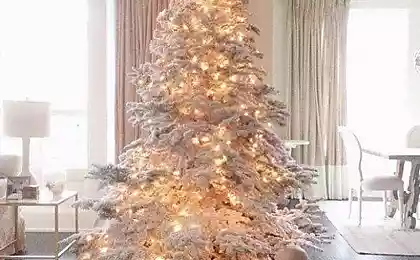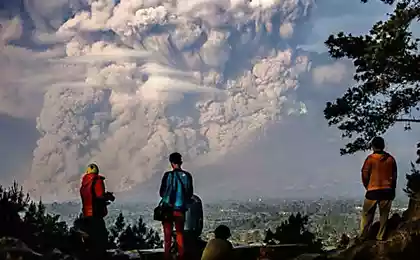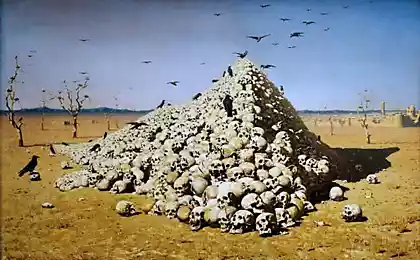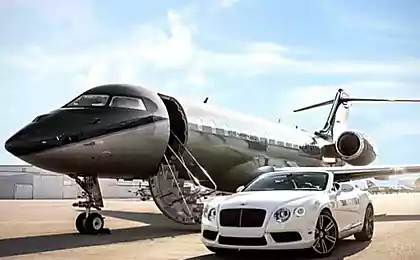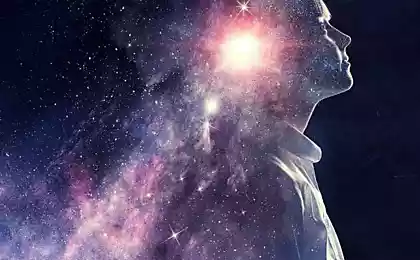677
The era of humanity
The era of mankind
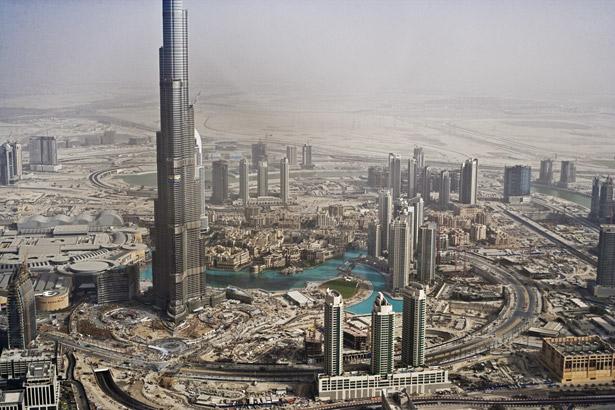
In the last 11, 700 years - the era that geologists call the Holocene - the climate has remained remarkably stable.
It allowed people to plan for the future by inventing agriculture, cities, communication networks and new forms of energy.
Now some geologists believe that human activity is so irrevocably altered our planet that we have entered a new geological time.
Simply put, our planet will no longer function as before. Atmosphere, climate, oceans, ecosystems ... Now they operate outside the norms of the Holocene. This strongly suggests that we crossed the border ages.
The first tests of atomic bombs left no visible signs in the soil.
1945 was the dawn of the nuclear age. Sediments deposited all over the world in the year, contain appreciable signs of radioactive tests the first atomic bomb in the United States & quot ;.
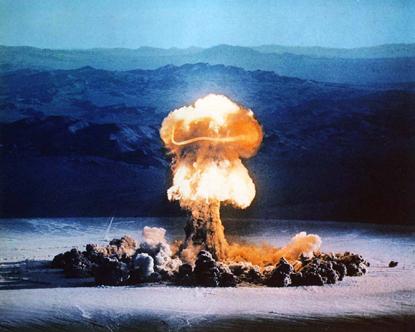
World dams. Hoover Dam and Lake Mead in Nevada. Levees are designed to stop the flooding, facilitate irrigation of fields and generate 16 percent of all electricity generated in the world. Also, because of their structures had to change their place of residence between 40 and 80 million people, and many ecosystems have been destroyed. Dams are now built on more than half of all large rivers. Some, like Colorado, dry, including Lake Mead, which affects water southeastern regions.
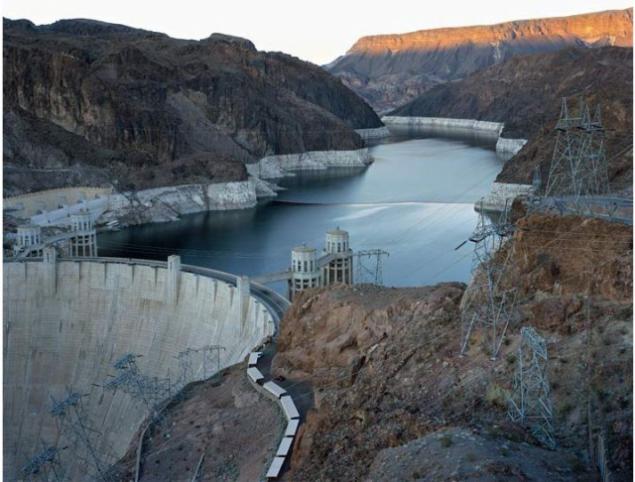
Rosignano Solvay in Italy. Tuscan coast was the scene of the drama being played out between the man and the sea. "Tropical" sands are not real, they are clarified by means of chemical treatment of carbonates. Sea salt is extracted from plant processes to chlorine and other chemicals needed. The plant operates on fossil fuels, while at the same time, carbon dioxide is produced as processing occurs slowly over the ocean, threatening to its fauna and flora.
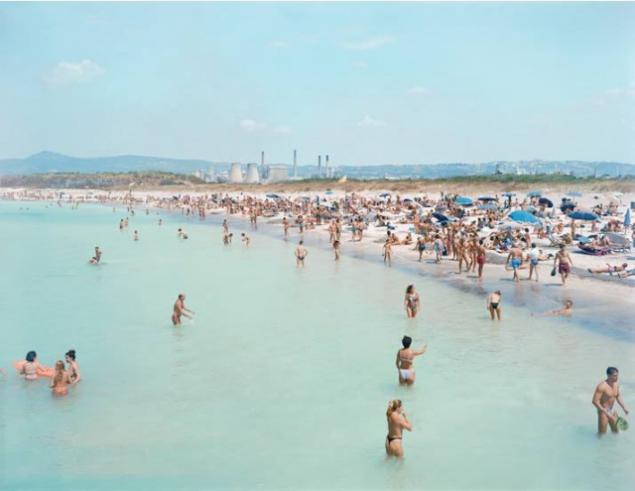
In the 1970s, oil has completely changed Dubai. Now the city boasts the presence of the tallest buildings in the world, with two million inhabitants, the giant shopping centers, development of water desalination and cooling. In fact, the city is located in the desert - but cheap energy is phenomenal.
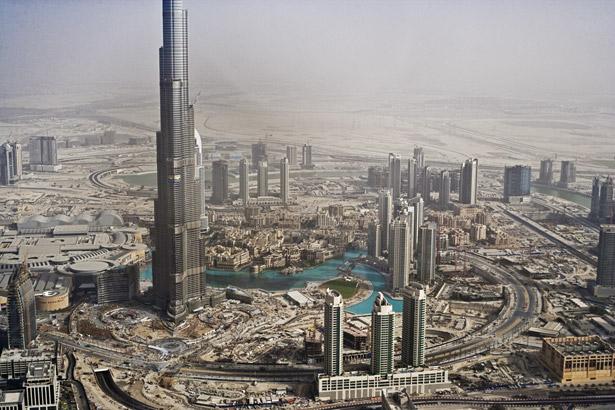
A century of oil. California. Open in 1911, the field began to develop after the expansion of the adjacent cities. Petroleum products have been used in the production of plastics, cosmetics and pharmaceuticals. Today, it produces up to 32 million barrels of oil each year - about as much is spent worldwide for 9:00.
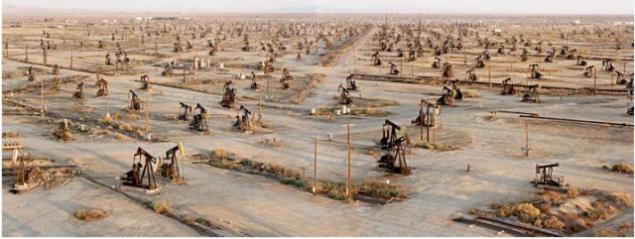
Professor Steffen: "Some years ago I drew charts to track the growth of human society from 1800 to the present time. I saw something unexpected - a striking acceleration after World War II ».
During this time, the population has more than doubled to an astonishing 6.9 billion ($ 7 billion already). But, much more importantly, Professor Steffen said that the world economy has grown ten-fold over the same period.
Population growth - not as a big problem. The real problem is that we become richer and consume more resources exponentially.
Industrial farming. The province of Almeria, Spain. Once the arid plains of southern Spain now covered by greenhouses and polytunnels. Through the use of electricity and water, the crop harvested in greenhouses year round - tomatoes in winter, for example. But first of all greenhouse were created for the cultivation of grain, but not tomatoes. 38% of all free of glaciers of the planet is now covered with plantation agriculture to ensure food for 7 billion people. It is expected that by 2050 the population will increase by another two billion.

Food himiya.Udobreniya and pesticides lead to high yields in question on this billboard. However, side effects are also very noticeable - nitrogen causes "dead zones" in estuaries around the world.
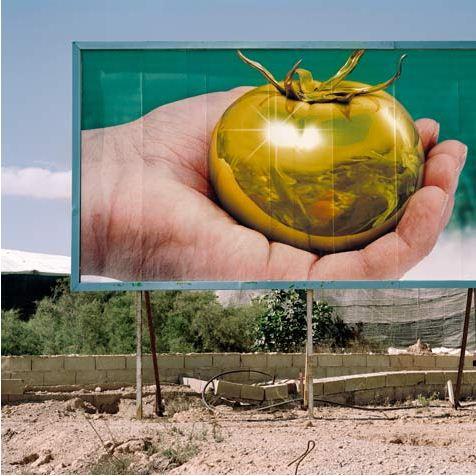
"One of the most disturbing features of the enormous acceleration - is the loss of biological diversity", - said Professor Steffen. "The extinction of species is currently happening in the 100 - 1000 times brown sugar than natural levels, and the pace will continue to increase in this century».
Permanent withdrawal of water for cotton plantation turned what was once one of the largest lakes in the world miserable luzhitsu.Aralskoe sea.

The sixth mass istreblenie.Muzey Natural History, Aralsk, Kazakhstan. Sea sturgeon is on the verge of extinction. The Aral Sea, it is no longer seen.
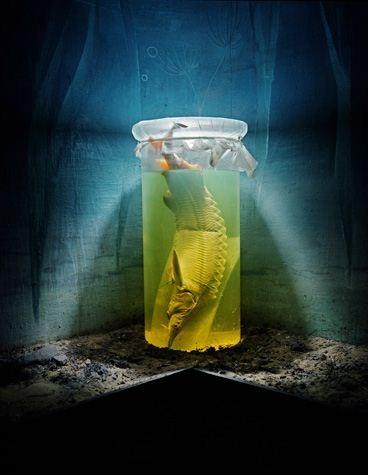
Overpopulation. The capital of Mexico. About 20 million people live in Mexico City, is the fifth largest city in the world. In 1800, the percentage of the urban population was only 3%. Today it is 50%, with a tendency of constant increase.
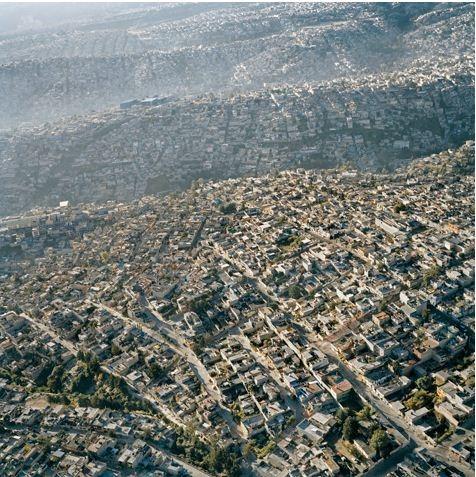
On the street in Calcutta. Crowded streets of Calcutta with their vendors, pedestrians and famous taxi. The city of 16 million people live, and every day from the suburbs and villages come new. In 1975, only three cities around the world can boast of the number of population will be over 10 million. Today, 21 such megacities, mainly in developing countries.
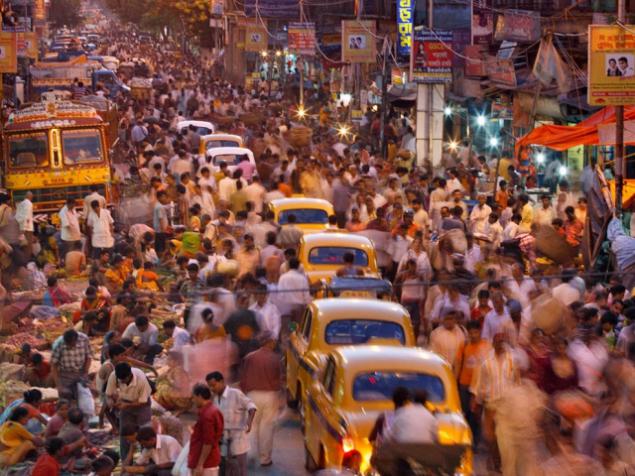
And though today we have 7 billion, the average earthling in the 21st century looks something like this :)
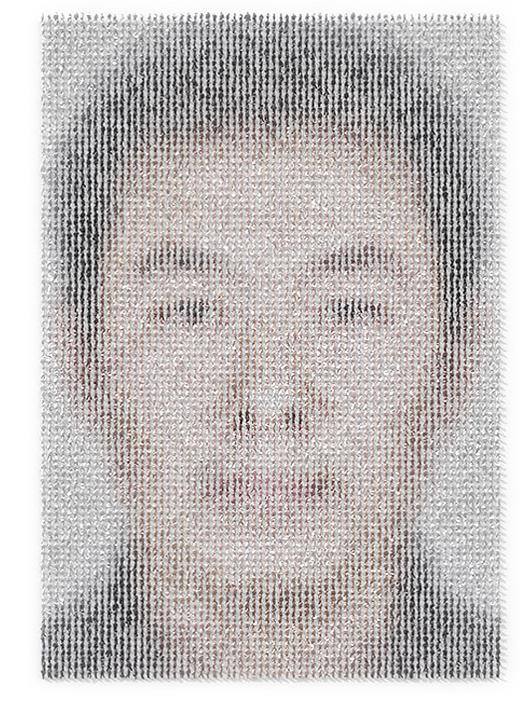

In the last 11, 700 years - the era that geologists call the Holocene - the climate has remained remarkably stable.
It allowed people to plan for the future by inventing agriculture, cities, communication networks and new forms of energy.
Now some geologists believe that human activity is so irrevocably altered our planet that we have entered a new geological time.
Simply put, our planet will no longer function as before. Atmosphere, climate, oceans, ecosystems ... Now they operate outside the norms of the Holocene. This strongly suggests that we crossed the border ages.
The first tests of atomic bombs left no visible signs in the soil.
1945 was the dawn of the nuclear age. Sediments deposited all over the world in the year, contain appreciable signs of radioactive tests the first atomic bomb in the United States & quot ;.

World dams. Hoover Dam and Lake Mead in Nevada. Levees are designed to stop the flooding, facilitate irrigation of fields and generate 16 percent of all electricity generated in the world. Also, because of their structures had to change their place of residence between 40 and 80 million people, and many ecosystems have been destroyed. Dams are now built on more than half of all large rivers. Some, like Colorado, dry, including Lake Mead, which affects water southeastern regions.

Rosignano Solvay in Italy. Tuscan coast was the scene of the drama being played out between the man and the sea. "Tropical" sands are not real, they are clarified by means of chemical treatment of carbonates. Sea salt is extracted from plant processes to chlorine and other chemicals needed. The plant operates on fossil fuels, while at the same time, carbon dioxide is produced as processing occurs slowly over the ocean, threatening to its fauna and flora.

In the 1970s, oil has completely changed Dubai. Now the city boasts the presence of the tallest buildings in the world, with two million inhabitants, the giant shopping centers, development of water desalination and cooling. In fact, the city is located in the desert - but cheap energy is phenomenal.

A century of oil. California. Open in 1911, the field began to develop after the expansion of the adjacent cities. Petroleum products have been used in the production of plastics, cosmetics and pharmaceuticals. Today, it produces up to 32 million barrels of oil each year - about as much is spent worldwide for 9:00.

Professor Steffen: "Some years ago I drew charts to track the growth of human society from 1800 to the present time. I saw something unexpected - a striking acceleration after World War II ».
During this time, the population has more than doubled to an astonishing 6.9 billion ($ 7 billion already). But, much more importantly, Professor Steffen said that the world economy has grown ten-fold over the same period.
Population growth - not as a big problem. The real problem is that we become richer and consume more resources exponentially.
Industrial farming. The province of Almeria, Spain. Once the arid plains of southern Spain now covered by greenhouses and polytunnels. Through the use of electricity and water, the crop harvested in greenhouses year round - tomatoes in winter, for example. But first of all greenhouse were created for the cultivation of grain, but not tomatoes. 38% of all free of glaciers of the planet is now covered with plantation agriculture to ensure food for 7 billion people. It is expected that by 2050 the population will increase by another two billion.

Food himiya.Udobreniya and pesticides lead to high yields in question on this billboard. However, side effects are also very noticeable - nitrogen causes "dead zones" in estuaries around the world.

"One of the most disturbing features of the enormous acceleration - is the loss of biological diversity", - said Professor Steffen. "The extinction of species is currently happening in the 100 - 1000 times brown sugar than natural levels, and the pace will continue to increase in this century».
Permanent withdrawal of water for cotton plantation turned what was once one of the largest lakes in the world miserable luzhitsu.Aralskoe sea.

The sixth mass istreblenie.Muzey Natural History, Aralsk, Kazakhstan. Sea sturgeon is on the verge of extinction. The Aral Sea, it is no longer seen.

Overpopulation. The capital of Mexico. About 20 million people live in Mexico City, is the fifth largest city in the world. In 1800, the percentage of the urban population was only 3%. Today it is 50%, with a tendency of constant increase.

On the street in Calcutta. Crowded streets of Calcutta with their vendors, pedestrians and famous taxi. The city of 16 million people live, and every day from the suburbs and villages come new. In 1975, only three cities around the world can boast of the number of population will be over 10 million. Today, 21 such megacities, mainly in developing countries.

And though today we have 7 billion, the average earthling in the 21st century looks something like this :)

